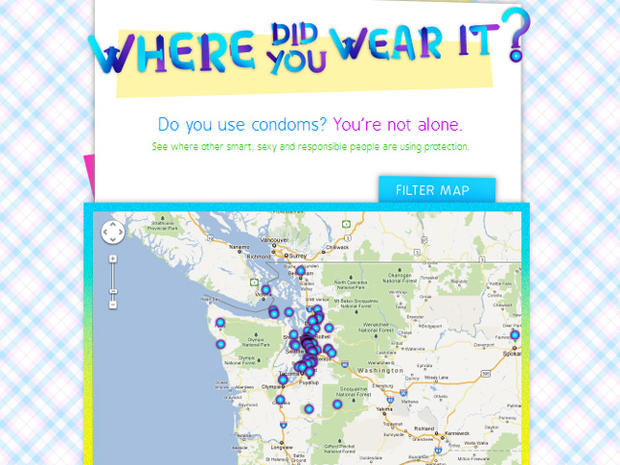Condoms with QR codes enable smartphone check-ins
(CBS News) Think social media couldn't get any more personal? Planned Parenthood has introduced new QR-coded condoms that take social sharing to another level.
PICTURES - Unsafe sex? Poll shows where young people do it most
As part of National Condom Week (Feb. 14 - Feb. 21), Planned Parenthood of the Great Northwest distributed 55,000 condoms throughout western Washington. The condom packaging contained QR codes, barcodes that can be scanned by smart phones which direct users to a mobile website. What site did the QR codes take users to? www.WhereDidYouWearIt.com, a geo-location service website that allows users to "check-in" their safe sex activity.
The site is intended to promote healthy sexuality and encourage millennials, chief social media users, to "be proud to wear protection," Planned Parenthood said in a written statement.
"Condoms are an essential tool in preventing unintended pregnancy and stopping the spread of sexually transmitted infections (STIs), including HIV," Nathan Engebretson, new media coordinator for Planned Parenthood Great Northwest, said in the statement. "We hope the site promotes discussions within relationships about condoms and helps to remove perceived stigmas that some people may have about condom use. Where Did You Wear It attempts to create some fun around making responsible decisions," he said.
The check-in map can be searched by gender, orientation, approximate age and location, among other filters. But Planned Parenthood said it wouldn't invade privacy for these private moments.
"We intentionally made it so you couldn't zoom in superclose," Engerbretson told CNET. "We really wanted to give people an option so they could see their check-in reflected on the map but at the same time give them some privacy."
Just because a person is using a condom doesn't mean they're practicing safe sex, according to a recent study by the Kinsey Institute. The study found many people don't know how to use condoms correctly, with common errors including not using condoms throughout sex, not leaving space or squeezing air from the tip of the condom, putting condoms on upside down, not using water-based lubricants, and incorrect withdrawal.
According to study author Dr. Richard Crosby, public health professor at the University of Kentucky, encouraging condom use and accessibility is important, but so is the need to improve clinic-based counseling and public education efforts.
According to Planned Parenthood, one in two sexually active persons will get a sexually transmitted disease by age 25 - and most won't know it. Every year, there are approximately 15 million new cases of STDs.
The CDC has more information on condoms.
